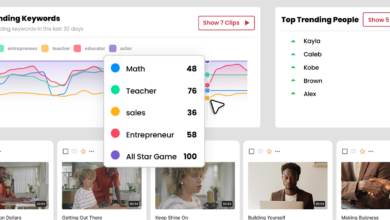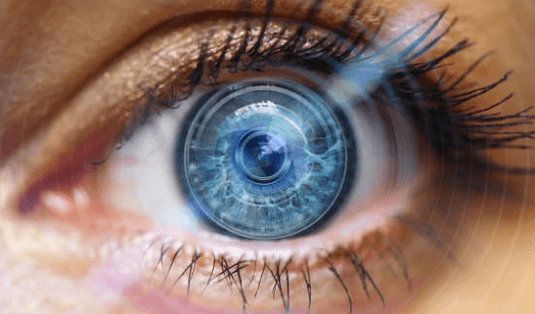
Real-time facial recognition systems have been a mainstay in dystopian sci-fi media for decades. To the excitement of many, this technology is no longer a work of fiction but a real-world security solution that’s now an integral part of modern security systems around the world. The application of this technology is practical and powerful, however, in the wrong hands, it could be used nefariously. It poses a rather interesting ethical question: if we can’t guarantee safety should we still embrace the technology?
We’ve all seen, and probably rolled our eyes at, movies and shows where intelligence agencies or the police zoom in on a face in a blurry security video and ‘enhance’ it, making the image crystal-clear with the touch of a button; then within seconds they match that face to one of the 7.8 billion people on earth.
This was once a ridiculous exaggeration of real-time facial recognition systems, but that’s no longer the case. While not quite up to the level depicted in The Terminator, or Minority Report, real-time facial recognition systems are now incredibly advanced. In fact, police departments around the world have been using these solutions for years, despite some noteworthy flaws.
It’s not only law enforcement agencies using this software either. Facebook users might be familiar with the social network’s own facial recognition software, which was performing similar searches on users’ photos until it was shut down as part of a company-wide move to limit the use of facial recognition in its products.
Meanwhile, Amazon created a huge private surveillance network thanks to the facial recognition software in its Ring Doorbell devices. Even supermarkets are getting in on the act, with a report emerging recently that Co-Op was using biometric cameras to scan faces and add shoppers to a secret watchlist of suspects, holding their data for years.
Advancements in the field are clear to see but are also leading to more discussions around the pressing ethical questions associated with the technology, which the sector must be ready to answer as adoption rates rise. In particular, there is growing concern about the potential for these systems to be used by bad actors to commit fraudulent activity.
Privacy campaigners also cite worries about the technology, with others wondering if it may be used to impinge on human rights in the near future. Unfortunately, we have already seen evidence of these systems being used to target minority groups, such as the Uyghur population in the Xinjiang region of China.
So, the question is, should the rest of us be worried?
Understanding facial recognition systems
Real-time facial recognition systems come in many forms, but most follow a similar working pattern. Using AI, these solutions first detect the presence of a face within an image. Next, real-time facial recognition systems work to analyse the detected face and create several relevant data points, which can be used to identify individuals from one another.
Finally, the system will compare these data points against pre-existing records and in turn, should be able to recognise the person in the frame. This is great in theory, but research suggests that many real-time facial recognition systems are less effective when analysing the faces of ethnic minorities, which has led to criticisms around unconscious racial bias.
The positives of real-time facial recognition systems
Regardless of this disparity, real-time facial recognition systems are becoming increasingly popular around the world. These solutions offer a much-enhanced layer of security to protect businesses and individuals alike. As opposed to traditional CCTV technology, real-time facial recognition systems enable security measures to be deployed more pre-emptively.
For example, these solutions can be used to identify known or suspected threats before a crime is committed, which allows security measures to be proactive, not reactive. In fact, it is estimated that almost half of American adults – over 117 million people, as of 2016 – have photos within a facial recognition network used by law enforcement.
With real-time facial recognition systems in place, the threat of major acts of terror occurring can be significantly reduced. For police and national security services, the technology also offers a powerful tool in the fight to locate wanted or escaped fugitives, who may otherwise be able to avoid detection and commit further criminal acts.
Additionally, real-time facial recognition systems can be used to help find missing persons more efficiently. In early 2020, these systems were effectively leveraged by Chinese authorities to locate an abducted man called Mao Yin and were able to reunite him with his family after over 30 years of being missing.
The negatives of real-time facial recognition systems?
Despite these positives, there is the potential for real-time facial recognition systems to be used nefariously, particularly if the technology was to fall into the hands of those with bad intentions. More worryingly, these solutions require the creation of databases to store information that can be used to identify individuals.
The sheer number of security breaches of major companies and governments over the past year alone should give anyone doubts about whether this information can be properly secured. Unfortunately, if a breach did occur, then criminals would have a powerful new tool for blackmail and extortion.
For example, if a criminal group wanted to breach the security of a particular company, they could use facial recognition software to find the identities of the company’s employees and target them with individualised social engineering or extortion attempts. In doing so, fraudsters would be able to elevate the effectiveness of their attacks very quickly.
What’s more, since public security cameras are rarely very secure, it would be quite easy to digitally stalk targets and potentially find compromising information. Sadly, the possibilities for a well-organised and creative criminal group to exploit the technology are endless. That’s why we must be cautious about embracing it too fast.
Should we embrace this technology?
Going back to the original questions of this article: should we use real-time facial recognition systems if they could be used unethically? Like with any major technological advancement, this software offers both benefits and drawbacks, which must be carefully considered as the technology becomes more widely adopted.
In the right hands, these solutions provide a more efficient way for businesses, police, and security services to mitigate threats and provide an effective tool in preventing crime. To stop bad actors from taking advantage, however, it is essential that the appropriate checks and balances are imposed through the sector to ensure strict oversight.
For the majority of the public, real-time facial recognition systems are unlikely to alter their daily life and should help to make us all safer in the long run. To ensure this, however, it is imperative that these systems and the databases used to support them are backed by effective cybersecurity measures.
Without this protection, real-time facial recognition systems could be commandeered by criminals; used to target innocent individuals, and to commit identity fraud on a frightening scale. If that’s allowed to happen, we might soon find ourselves living in a reality not too different to the ones depicted in those classic sci-fi flicks.




